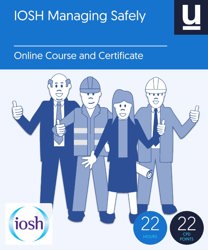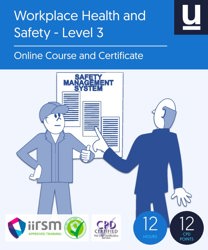What Does MHSW Mean?
MHSW is short for Management of Health and Safety at Work. The term often appears as MHSWR for the 1999 regulations. Alongside the Health and Safety at Work etc. Act, these rules provide detailed guidance on planning and organising workplace safety.
What Are the General Principles of Prevention?
A key concept in the MHSWR 1999 is the general principles of prevention. This means employers should:
Avoid risks where possible.
Tackle risks at source.
Adapt work to the individual, especially to reduce repetitive work.
Use collective protective measures before individual measures.
Keep up with technical progress.
Replace dangerous processes or materials with safer alternatives.
Following these principles reduces the risk of accidents and harmful exposure to hazards like chemical agents and biological agents.
What Does Regulation 3 Require?
Regulation 3 covers the assessment of the risks. Employers must:
Identify specific hazards linked to their work activity.
Consider risks to young persons, expectant mothers, an unborn child, and members of the public.
Think about employees’ lack of experience or special needs.
Evaluate potential risks and decide on safety measures.
Record findings (if five or more employees).
Review assessments regularly or if there is a significant change to processes or work equipment.
A robust risk assessment helps apply the hierarchy of risk control and maintain a healthy workplace.
How Should Employers Control Risks? (Regulation 4)
Once risks are identified, employers must put appropriate health and safety arrangements in place. They should:
Eliminate hazards if possible.
Substitute with safer alternatives (suitable alternative work if needed).
Use engineering controls and collective protective measures.
Provide personal protective equipment (PPE) only when other controls can’t remove the risk.
This approach follows the hierarchy of risk control — a core element of effective workplace safety.
What Safety Arrangements Must Be Made? (Regulation 5)
Regulation 5 says employers must plan, organise, monitor and review their safety arrangements. This includes keeping a written safety policy and setting up clear roles and responsibilities for managing risks.
When Is Appropriate Health Surveillance Needed? (Regulation 6)
Some work activities involve exposure to chemical agents, biological agents, or other hazards that could cause health conditions over time. Regulation 6 requires appropriate health surveillance to detect problems early and prevent harmful exposure.
Who Is a Competent Person? (Regulation 7)
Employers must appoint a competent person. This is someone with the right skills and knowledge to help manage health and safety. This could include carrying out inspections, updating risk assessments, or advising on safety measures.
What Happens in Serious and Imminent Danger? (Regulation 8)
Employers must have clear emergency plans to protect staff from serious and imminent danger, such as fires or chemical leaks. This includes:
Informing workers about the danger.
Giving instructions to stop work and evacuate.
Ensuring safe routes to safety.
Good planning helps avoid panic and protects lives.
Why Arrange Contact with External Services? (Regulation 9)
Regulation 9 says employers must plan how to contact the fire brigade, ambulance, police or other emergency services. This ensures quick response when needed.
What Information Should Employees Receive? (Regulation 10)
Employers must provide relevant information about:
Sharing this keeps everyone informed and helps maintain a safe environment.
How Should Employers Consider Capabilities and Training? (Regulation 13)
Before assigning tasks, employers must check employees’ skills and experience. They must provide suitable safety training, updated as risks change or if new staff join. Training should happen during work hours and cover specific regulations, including fire precautions and use of work equipment.
What Are Employees’ Duties? (Regulation 14)
Employees must:
Take care of their own and others’ safety.
Follow safety instructions.
Use equipment properly.
Report hazards or unsafe conditions.
This helps build a culture of shared responsibility.
How Can You Stay Compliant with the MHSWR 1999?
Following the management regs is vital for legal compliance and a healthy workplace. Keep risk assessments up to date, follow the general principles of prevention, and review your safety arrangements regularly.
Further Learning
If you would like to build your knowledge and confidence in managing workplace health and safety, take a look at our courses listed below. These courses cover practical ways to meet your legal duties under the MHSWR 1999 and other key regulations.




